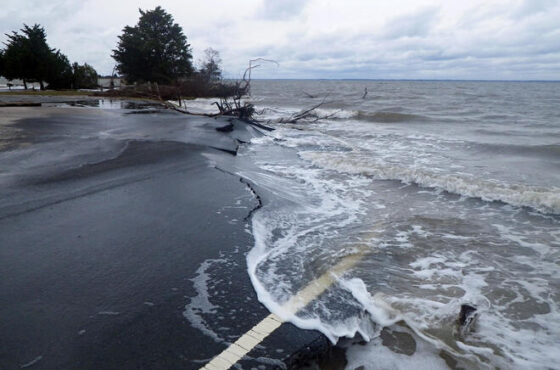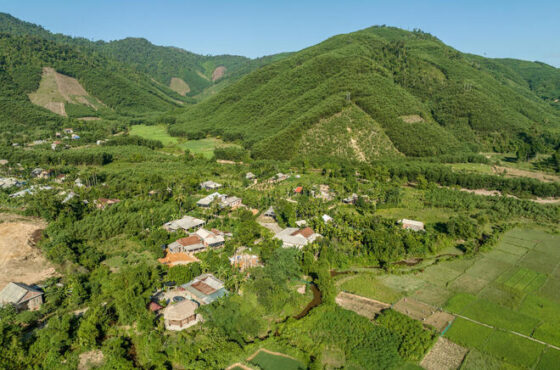Trump EPA Lauds Unfinished Hudson Cleanup
Published by the Natural Resources Defense Fund
If at first you don’t succeed, pretend failure is success.
That appears to be the message from the Trump EPA in its “Five Year Review” report released last week on one of the longest and highest profile chemical cleanups in U.S. history—the removal of toxic PCBs from the Hudson River.
Nearly 200 miles in length, and running through the heart of the most populated region in the country, EPA declared the bulk of the Hudson River a Superfund site (i.e., a contaminated waste site) after it was discovered that the General Electric corporation or “GE” had dumped millions of pounds of PCBs in the river over several decades.
Although we’ve known PCBs are really bad for a really long time (Congress banned their manufacture in 1979), it took decades of arm twisting and public outcry to get GE to agree to a cleanup plan negotiated between the company and EPA. With that plan now largely complete, there’s only one big problem—the river is still teeming with PCBs.
The Five Year Review is EPA’s appraisal of the cleanup it designed and the agency’s latest attempt to paper over the project’s shortcomings. To understand why the rose-colored assessment should be taken with a healthy dose of salt, some background is helpful.
In essence, EPA tried to fix a very big mess by partially cleaning up part of the river. The agency guessed that if GE dug out a portion of the PCBs buried in the most contaminated portion of the river (the “Upper Hudson” or upper 40 miles of the site), the benefits—including cleaner fish and cleaner water—would literally trickle down to the rest of the site (the “Lower Hudson” or the other 160 miles).
While it may have looked like a good plan at the time, EPA later found out that the river was two to three times more contaminated than expected. Despite this troubling discovery, EPA soldiered on with the same plan largely as is. The result is somewhat of a tale of two rivers. Here’s the breakdown:
Upper Hudson – The good news is that, in the areas that EPA ordered PCBs dug up or “dredged” and disposed of, there has been improvement. The bad news is that this improvement is seen mainly in the areas that were fully dredged. Elsewhere, the recovery is happening much slower than expected—so much so that it may be generations longer than anticipated for it to be safe to eat Hudson River fish on a regular basis, or even at all.
Lower Hudson – Only bad news here. As it turns out, the “trickle down” effect EPA was hoping for didn’t really happen, meaning that the cleanup didn’t have a big impact on approximately 80% of the site.
EPA doesn’t dispute the data (so we’re not quite in the realm of “alternative facts”), but it does have a funny way of looking at it.
EPA has long used fish as the benchmark for a clean and safe river. EPA picked the current cleanup plan—which included dredging and a rest period for PCBs to cycle out of the river—because it was expected to make Hudson fish safe to eat within a certain timeframe. Now that it looks like that timeframe may be decades longer than expected, instead of facing the music, EPA is looking to change the definition of success.
They’re saying that even though the cleanup “is not yet protective of human health and the environment,” the success of the cleanup can only be measured after the rest period, but they don’t specify how long that period can be. In other words, whether it’s ten years, a hundred years, or just before the end of time, it doesn’t make a difference to EPA—as long as the river is safe some day, then the agency is happy to declare “mission accomplished.”
Additionally, while the agency officially determined that the cleanup “will be protective,” it also notes that eight more years of data is needed to know for sure. This in itself is kind of a paradox—how can EPA conclude that the cleanup “will be protective,” while acknowledging that it lacks essential data showing that to be true?
With all the distressing data, questionable conclusions, and goal-post moving, it’s no wonder that EPA and it’s chosen cleanup have been publicly criticized by the State of New York, NOAA, and elected officials.
You, too, have a chance to speak up for the Hudson River. Until September 1, 2017, you can write EPA to comment on the Five Year Review before it is made final, so mail or email your comments to:
Gary Klawinski, Director
EPA Region 2, Hudson River Office
187 Wolf Road, Suite 303
Albany, NY 12205
[email protected]
The EPA also plans to hold two public information meetings during the public comment period:
Wednesday, June 28, 2017
6 p.m. – 8 p.m.
Poughkeepsie Grand Hotel
Terrace Ballroom
40 Civic Center Plaza
Poughkeepsie, NY 12601
Wednesday, July 19, 2017
6 p.m. – 8 p.m.
The Saratoga Hilton
Saratoga Ballroom – Room 1
534 Broadway
Saratoga Springs, NY 12866
Nothing’s yet written in stone, so if you care about the Hudson River, make your voice heard! We’ll be doing the same.
Read the full article at: https://www.nrdc.org/experts/daniel-raichel/trump-epa-lauds-unfinished-hudson-cleanup






